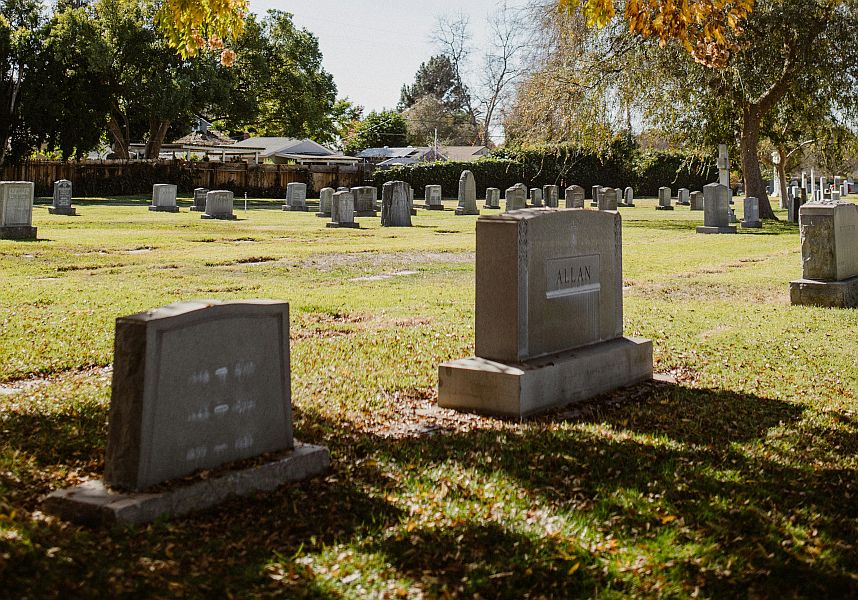How to Choose the Perfect Headstone for a Grave Site
Selecting a headstone for a loved one’s final resting place is an emotional and significant decision. It’s more than just a marker—it’s a tribute that stands the test of time, honoring the life and memory of someone special. With so many options to consider, from materials and designs to inscriptions and symbols, the process can feel daunting. However, with a bit of guidance and careful thought, you can find a headstone that perfectly reflects your loved one’s personality and legacy.
In this article, we’ll guide you through the key factors to consider when choosing the right headstone, making the decision a little easier.
Start with Cemetery Guidelines
Before you get too deep into selecting a headstone, it’s essential to check the rules and regulations of the cemetery where your loved one will be laid to rest. Each cemetery has its own set of guidelines on what’s allowed.
Questions to Consider:
– What sizes are permitted? Some cemeteries have specific size restrictions to maintain a uniform appearance and make upkeep manageable.
– Are there material limitations? Certain cemeteries might only allow particular materials like granite or bronze because they are durable and easier to maintain.
– What about design elements? It’s important to ask if there are any restrictions on engravings, symbols, or other design aspects.
Understanding these guidelines from the beginning will help you avoid potential issues and streamline your choices.
Picking the Right Material
One of the most critical decisions you’ll make is choosing the material for the headstone. The material affects not only the appearance but also the longevity and cost of the headstone.
Common Materials for Headstones:
– Granite: Granite is a top choice because it’s durable, available in many colors, and resistant to weathering. You can choose between a polished, glossy finish or a more natural, textured look.
– Marble: Marble offers a timeless, elegant appearance with its smooth surface and subtle veining. However, it’s softer than granite and may wear down more quickly, especially in harsh climates.
– Bronze: Bronze is typically used for plaques that are mounted on a stone base, often granite. It’s highly durable and has a classic, dignified look. Bronze plaques are also easier to care for compared to stone headstones.
– Limestone and Sandstone: These materials were more popular in the past but are less common today due to their susceptibility to weathering. However, they can provide a distinctive, historical look if well maintained.
When choosing a material, consider the climate and environment of the cemetery to ensure the headstone will stand the test of time.
Deciding on the Shape and Style
Headstones come in a wide variety of shapes and styles, from traditional to contemporary. The style you choose can reflect the personality and preferences of your loved one.
Popular Styles for Headstones:
– Flat or Lawn-Level Markers: These are simple, flat plaques that sit flush with the ground. They’re understated and are often chosen for modern cemeteries.
– Upright Headstones: These are the classic, standing headstones that offer more space for inscriptions and can be shaped in different ways, like with arched tops or curved edges.
– Slant Markers: Slant markers are a compromise between flat and upright markers, with a slanted face that makes them easy to read while standing.
– Ledger Stones: These large, flat stones cover the entire grave and provide ample space for inscriptions or decorative elements. They’re often paired with upright headstones.
– Custom Shapes: For a more unique tribute, some opt for custom-shaped headstones, such as hearts, crosses, or other meaningful symbols.
The style you choose should align with your loved one’s character, the cemetery’s rules, and your family’s preferences.
Crafting the Inscription
The inscription is one of the most personal elements of the headstone. It’s a chance to capture the essence of your loved one’s life and what they meant to those around them.
What to Include in the Inscription:
– Name and Dates: The basics include the full name of the deceased, along with their birth and death dates.
– Epitaph: An epitaph is a short phrase or sentence that sums up the person’s character, values, or how they were loved. It could be something traditional like “Beloved Father” or a more unique, personalized message.
– Quotes or Verses: Adding a meaningful quote, Bible verse, or poem can add depth to the headstone. This could be something your loved one held dear or a sentiment that reflects your feelings.
– Symbols and Images: Consider incorporating symbols or images that were significant to your loved one. This could be a religious symbol, a representation of a favorite hobby, or something that captures their spirit.
Take your time with this part of the process—it’s a lasting tribute that will be seen and remembered for generations.
Adding Personal Touches
 Once you’ve covered the basics, you might want to think about adding some extra features that make the headstone even more special.
Once you’ve covered the basics, you might want to think about adding some extra features that make the headstone even more special.
Additional Features to Consider:
– Photographs: Adding a ceramic or etched photo can create a strong visual connection to your loved one.
– Vases or Flower Holders: Built-in vases or flower holders make it easy to leave fresh flowers regularly, adding ongoing beauty to the grave site.
– Benches: Some families choose to incorporate a bench as part of the memorial, providing a place to sit and reflect.
– Engraved Artwork: Custom artwork, like landscapes or symbols that were meaningful to your loved one, can add a unique touch.
These additional features can enhance the headstone and make the memorial site feel even more personal and reflective of your loved one’s life.
Considering the Budget
Headstones vary widely in price depending on the material, size, design, and additional features. It’s important to set a budget early on to ensure you find something that’s meaningful and within your means.
Factors Influencing Cost:
– Material: Granite tends to be more affordable than marble, while bronze plaques can vary in cost depending on their size and level of customization.
– Size and Design Complexity: Larger headstones with intricate designs or custom shapes will be more expensive than simpler, smaller markers.
– Engravings and Inscriptions: The cost of engraving can add up, especially if you choose a long inscription or detailed artwork.
– Installation and Maintenance: Don’t forget to factor in the cost of installation, which is usually managed by the cemetery, and any ongoing maintenance fees.
It’s a good idea to get quotes from several suppliers and discuss your options with the cemetery before making a final decision.
Take Your Time and Seek Support
Choosing a headstone is a significant decision, and it’s okay to take your time with it. This isn’t something that needs to be rushed. Take the time to explore your options, consult with family members, and seek advice from professionals if needed.
Tips for Making the Decision:
– Involve Family: Engage with close family members in the decision-making process to ensure that the headstone reflects everyone’s wishes.
– Consult a Professional: Cemeteries and funeral homes often have staff who can help guide you through the process. They can offer valuable insights on materials, designs, and inscriptions.
– Visit Other Grave Sites: Seeing other headstones in person can provide inspiration and help you visualize what different materials, styles, and inscriptions look like.
Remember, the headstone you choose will serve as a lasting tribute, so it’s worth taking the time to make sure it’s just right.
Conclusion
Choosing the perfect headstone is a heartfelt way to honor your loved one’s life and legacy. By considering factors like cemetery rules, material, style, inscription, and budget, you can create a tribute that’s not only beautiful but also enduring. While the process may feel challenging, it’s also an opportunity to reflect on the life that was lived and to create a memorial that future generations will cherish.

This is never an easy decision, but I say follow your heart.